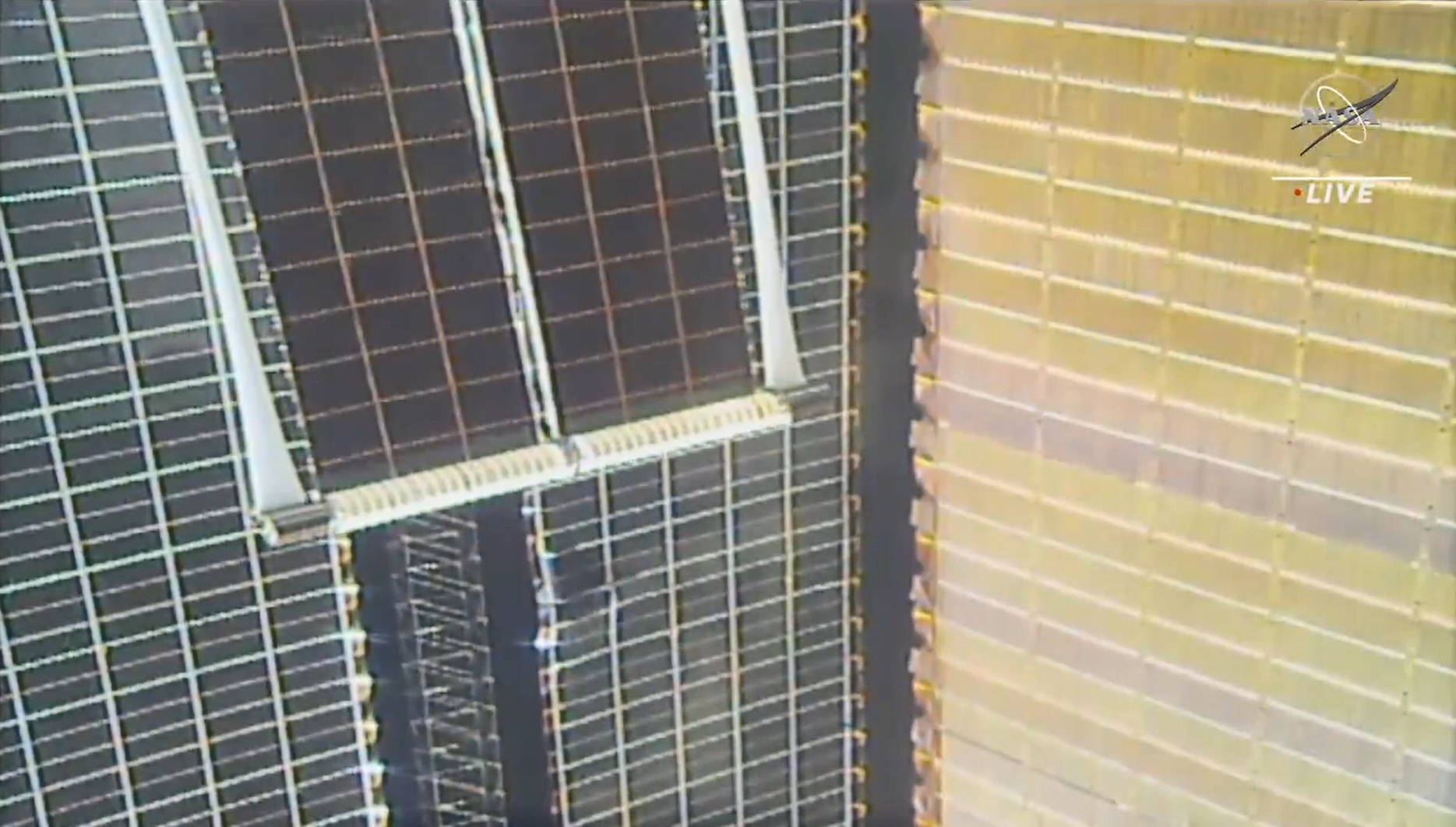Spacewalkers Complete Second Roll Out Solar Array Installation

NASA astronaut Shane Kimbrough and ESA (European Space Agency) astronaut Thomas Pesquet concluded their spacewalk at 2:37 p.m. EDT, after 6 hours and 45 minutes. In the ninth spacewalk of the year outside the International Space Station, the two astronauts installed and deployed a new ISS Roll-Out Solar Array (iROSA) on the far end of the left (port) side of the station’s backbone truss structure (P6).
Kimbrough and Pesquet successfully removed the array from its position in the flight support equipment, maneuvered it into position, connected the electrical cables, and released it to extend the solar array to its fully deployed position at the 4B power channel. After deployment, Pesquet also retrieved an articulating portable foot restraint (APFR) to bring inside the space station.
During two spacewalks June 16 and 20, Kimbrough and Pesquet installed and deployed a new array on 2B power channel also on the port 6 truss. Both new solar arrays are providing good power generation. Each new iROSA is expected to produce more than 20 kilowatts of electricity.
NASA is augmenting six of the eight existing power channels of the space station with new solar arrays to ensure a sufficient power supply is maintained for NASA’s exploration technology demonstrations for Artemis and beyond as well as utilization and commercialization.
This was the ninth spacewalk for Kimbrough, the fifth for Pesquet, and the fifth they conducted together. Kimbrough has now spent a total of 59 hours and 28 minutes spacewalking, and Pesquet’s total spacewalking time is 33 hours exactly.
Space station crew members have conducted 241 spacewalks in support of assembly and maintenance of the orbiting laboratory. Spacewalkers have now spent a total of 63 days, 7 hours, and 41 minutes working outside the station.
In November 2020, the International Space Station surpassed its 20-year milestone of continuous human presence, providing opportunities for unique research and technological demonstrations that help prepare for long-duration missions to the Moon and Mars and also improve life on Earth. In that time, 244 people from 19 countries have visited the orbiting laboratory that has hosted nearly 3,000 research investigations from researchers in 108 countries and areas.
Learn more about station activities by following the space station blog, @space_station and @ISS_Research on Twitter as well as the ISS Facebook and ISS Instagram accounts.
from Space Station https://ift.tt/3xT6t43
Comments
Post a Comment